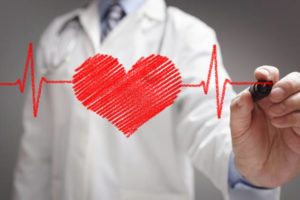Heart Disease & Cardiovascular Diseases in India

Indians around the globe have the highest rates of premature coronary artery disease (CAD), with clinical manifestations occurring about 10 years earlier than in other populations. Incidence and mortality rates for CAD are 50−300% higher among overseas Indians compared with compatriots.
- India has seen a rapid transition in its disease burden (number of cases/lakh) over the past couple of decades. The load of communicable and non‐ communicable diseases (NCDs) is projected to get reversed in 2020 from its distribution in 1995
- India is undergoing an epidemiological transition and is on the threshold of an epidemic of cardiovascular disease. From 1970−2000, CAD prevalence in India has increased by 300%. Currently, 10−12% of urban Indians have CAD compared to 3% of the US population.
- Demographic projections suggest a major increase in cardiovascular disease mortality as life expectancy increases and the age structure of the growing population changes.
- Overall, cardiovascular diseases (CVDs) accounted for around one‐fourth of all deaths in India in 2008. CVDs are expected to be the fastest growing chronic illnesses between 2005 and 2015, growing at 9.2% annually
- A more worrying fact is that the incidences of CVDs have gone up significantly for people between the ages 25 and 69 to 24.8%, which means losing more productive people to these diseases
Symptoms
While some people have no symptoms, others experience angina (dull, heavy to sharp chest pain or discomfort), pain in the neck/jaw/throat or pain in the upper abdomen or back. These may occur during rest, begin during physical activity, or be triggered by mental stress.
Sometimes heart disease may be silent and not diagnosed until a woman experiences signs or symptoms of a heart attack, heart failure, an arrhythmia, or stroke.
These symptoms may include
- Heart Attack: Chest pain or discomfort, upper back pain, indigestion, heartburn, nausea/vomiting, extreme fatigue, upper body discomfort, and shortness of breath.
- Arrhythmia: Fluttering feelings in the chest (palpitations).6
- Heart Failure: Shortness of breath, fatigue, swelling of the feet/ankles/legs/abdomen.
- Stroke: Sudden weakness, paralysis (inability to move) or numbness of the face/arms/legs, especially on one side of the body. Other symptoms may include: confusion, trouble speaking or understanding speech, difficulty seeing in one or both eyes, shortness of breath, dizziness, loss of balance or coordination, loss of consciousness, or sudden and severe headache.7
Risk Factors
High blood pressure, high LDL cholesterol, and smoking are key risk factors for heart disease. About half of Indian (49%) have at least one of these three risk factors.
Several other medical conditions and lifestyle choices can also put people at a higher risk for heart disease, including:
- Diabetes
- Overweight and obesity
- Poor diet
- Physical inactivity
- Excessive alcohol use
Screening
To reduce your chances of getting heart disease it’s important to8
- Know your blood pressure.Having uncontrolled blood pressure can result in heart disease. High blood pressure has no symptoms so it’s important to have your blood pressure checked regularly.
- Talk to your healthcare provider about whether you should be tested for diabetes. Having uncontrolled diabetes raises your chances of heart disease.
- Quit smoking.
- Discuss checking your cholesterol and triglycerides with your healthcare provider.
- Make healthy food Being overweight and obese raises your risk of heart disease.
- Limit alcoholintake to one drink a day.
- Lower your stress leveland find healthy ways to cope with stress.
Symptoms of a Heart Attack
- Chest pain or discomfort. Most heart attacks involve discomfort in the center or left side of the chest that lasts for more than a few minutes, or that goes away and comes back. The discomfort can feel like uncomfortable pressure, squeezing, fullness, or pain.
- Discomfort in other areas of the upper body. Can include pain or discomfort in one or both arms, the back, neck, jaw, or stomach.
- Shortness of breath. Often comes along with chest discomfort. But it also can occur before chest discomfort.
- Other symptoms. May include breaking out in a cold sweat, nausea, or light-headedness.
- A heart attack happens when the blood supply to the heart is cut off. Cells in the heart muscle that do not receive enough oxygen-carrying blood begin to die. The more time that passes without treatment to restore blood flow, the greater the damage to the heart.
- An estimated 1.3 million Indians died from CAD in 2000. The projected death from CAD by 2015 is 2.95 million, of which 14% will be 30 years, 31% will be 40 years, and 50% will be 50 years of age
- About 15% of people who have a heart attack will die from it.
- Almost half of sudden cardiac deaths happen outside a hospital.
- Having high blood pressure or high blood cholesterol, smoking, having had a previous heart attack or stroke, or having diabetes can increase your chance of developing heart disease and having a heart attack.